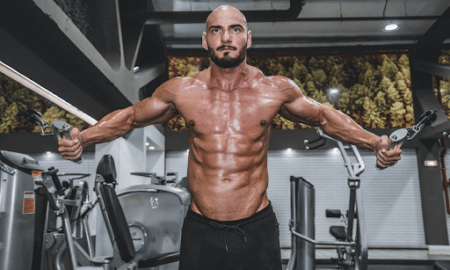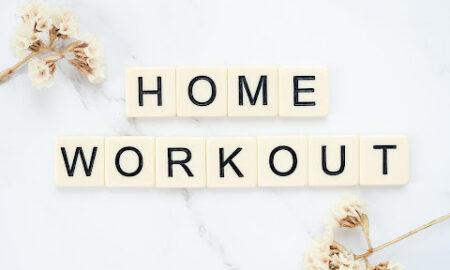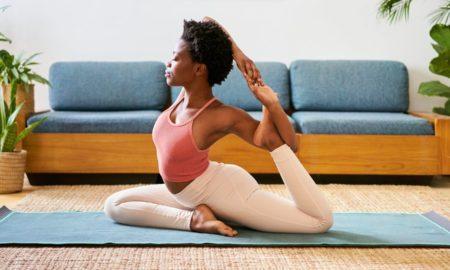Q: I’m 53 years old. I competed twice as a younger man, and my first over-50 contest is in a few months. My main problem is my limited equipment and getting the most out of it. I train in my basement with an Olympic free-weight set, a homemade squat rack, a flat bench and a few dumbbells. I have a hard time getting full-leg results from squats, and, even though bench presses and dumbbell flyes seem to be good exercises for my chest, I’m not sure that I’m doing them properly because I see no results in my pectorals after five years. Can you help me put something together with the equipment that I have?
A: I know how hard it can be to train alone in your basement gym—but it can be done successfully. I won my first contest that way, so I know that you can do many exercises, even with limited equipment, and win.
With squats I would do the following: Let’s say you’re training every other day and taking Sundays off. That means you’d do your legs once a week. You should do one heavy day, and the next week when you train legs, make it a specialized day. On the heavy leg day, equip yourself with as much support as possible so that you can squat as heavy as possible for at least eight reps. Wear high-top shoes, boots or weightlifting shoes that support your ankles. Wear a double-thick power belt, and, if you need it, a standard lifting belt above that. The power belt will make your stomach muscles push against something tight to keep your spine and back muscles in place as you squat. The second belt, if you choose to wear one, will help keep your body from bending forward—best suited for tall guys who have a long torso.
You may also want to use knee wraps, but only on your heaviest set. Do one warmup set and one set of 15 reps with a weight that’s comfortable. Then pick a weight that you can lift 12 times with relative ease, but do only eight reps. For the heaviest set, shoot for a weight that you can imagine yourself using for six and do everything you can for eight to 10 reps.
Next do stiff-legged deadlifts while standing on your bench—so you can use the rack for the bar. Try to keep your legs straight, your feet together and your lower back flat. Do three sets of 12 to 15 reps.
Move on to lunges. As you lunge with your right leg, your left leg stretches behind you. Do 12 to 15 lunges without moving your back foot—use the front-leg thigh only, and never lock the knee of your lunging leg. Lunge with your right leg until it burns. Then do the left leg. Do three sets for each leg.
On your other squat day you want to warm up with a light weight, and work your way up to something that you can do easily 12 to 15 times. Now, because this is a day to go for reps instead of weight, go all out and see how many you can do. Put your feet together, however, and keep them like that through the entire set—push off with your toes and not your heels. My guess is that you’ll reach 16 to 18 reps before your legs are done. Every other week, when you do this one set with your feet together, add five pounds and go for either the same number of reps or more. You’re striving to build the outer and medial areas of the thigh.
Do the rest of the exercises the way you did them in the heavy workout.
As for your chest, you have a bench, so if you’re a good bench presser, that should be your main multijoint exercise. Use the same type of routine as you did for squats, only with fewer reps—six to eight—and change your hand spacing from semiwide on heavy day to semiclose on specialization day. On the light day use a weight that prohibits you from going past 25 reps. Again, add five pounds every other week.
You said that you have trouble with flyes. There can be many reasons for that, as they’re very difficult to master. I had the same problem. For decades, no matter how heavy or light the weight, I did them as I’d seen so many great bodybuilders—such as Arnold and Franco—do them, and I could not replicate their form. I felt my shoulders and triceps more than my pectorals. I wondered if it was a chicken-or-egg problem. Did those big-chested bodybuilders build their pecs because they did heavy, perfect flyes? Or were they born with the perfect pec muscles for doing flyes with a perfect motion—which then added to their ever-growing mass?
After analyzing my form, I realized that for all those years my grip strength had been forcing the dumbbells up from the bottom with the strongest areas—my thumb, forefinger and forearm—activating my front delts more than my pecs. I decided to focus on pulling up with the palm of my hand. You should try that.
As you can see, with just the few pieces of equipment that you have, you can build your entire body—if you master the exercises.
—Paul Burke
Editor’s note: Contact Paul Burke via e-mail at [email protected]. Burke has a master’s degree in integrated studies from Cambridge College in Cambridge, Massachusetts. He’s been a champion bodybuilder and arm wrestler, and he’s considered a leader in the field of over-40 fitness training. You can purchase his book, Burke’s Law—a New Fitness Paradigm for the Mature Male, from Home Gym Warehouse. Call (800) 447-0008, or visit www.Home-Gym.com. His “Burke’s Law” training DVD is also available.




















You must be logged in to post a comment Login